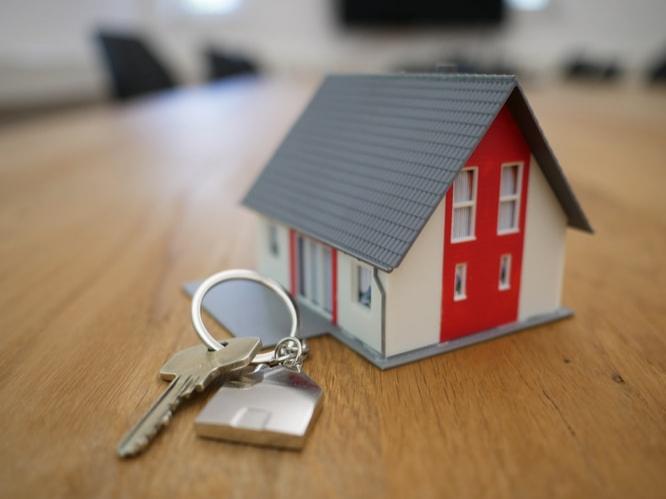Effective Ways to Pay Your Mortgage Off Faster

As homeowners, we may look at our mortgage statements and wonder if we'll ever be free of what seems like a never ending debt. Homeowners take great pleasure and pride in owning their own home, but when they go to pay their mortgage each month they may feel the weight of making these payments. The good news is there are ways to reduce your mortgage amount quicker and save money on interest and fees. Below, we will help guide you through different ways of freeing yourself of this debt.
Use an Adjustable-Rate Mortgage
An adjustable-rate mortgage (ARM), also known as a variable-rate mortgage or floating mortgage, is a mortgage with an interest rate that varies throughout the life of loan. These loans start off with a set interest rate for a set period of time. After the initial period of the loan (this time frame depends on what kind of ARM you signed up for), the interest rate will change. Periodically, the interest rate will be adjusted depending on the current market rate. There are many pros and cons to ARM loans, the biggest pro is that if the interest rate goes down your payment will decrease and you can pay your principal down faster. However, if the interest rate goes up and your mortgage goes up, you may not be able to afford it. Be sure you know how many mortgage payments you can miss before facing foreclosure or other consequences.
Pay Extra
A great way to reduce interest, save money, and pay your balance off faster is to make extra house payments. You can make one additional lump sum payment per year or pay a little extra each month, whatever you can afford. When you make a payment beyond the amount due each month, it goes 100% to the principal. This means there is a lower total amount owed (principal), which means the total cost of the interest will be lower since it is a percent of a lower total. This will save you lots of money over time. Use a mortgage calculator to see just how much you can save by making extra house payments.

Brown Bag It for Lunch
Many who work in office buildings or have jobs outside of the home go out to lunch every day. Those at home may order in. It may not seem like a lot of money per day being spent on lunches, but if the average lunch cost is $7 a day that is roughly $1700 a year spent on eating lunch. Making the decision to prepare lunches on your own and bring food from home can save you time and money. Going out to lunch can be pricey and also you can spend your whole lunch break waiting in line for food! Bringing your own lunch means you know your food is ready to go whenever you are hungry. This will give you much needed time to refresh and re-energize for the afternoon. Now imagine taking that saved lunch money and applying it to your mortgage. That will help pay it down faster and save on interest.
Refinance—Or Pretend You Did
Refinancing a mortgage means getting a new home loan to replace your current home loan. Many people do this when the interest rate drops significantly because when they refinance they will receive the benefits of a new lower interest rate. Many people refinance to remove their PMI (private mortgage insurance), which reduces their monthly payments. Whatever your reason, refinancing can lower your monthly payment and help you pay off your loan faster.
However, please note the refinancing process is not free and you will need to weigh the costs of the refinance with the benefits of your lower monthly payment.
…Or Pretend You Did
If you want to pay your mortgage down faster you can pretend like you have refinanced for a higher rate and apply that higher payment to your monthly mortgage payment. This way you will be paying down your mortgage at a faster rate. This strategy works for some people, but be sure you can afford to pay a higher amount before you send the money in.
Just Like Matt Damon, Try Downsizing
Take a look around your home and if you have rooms or spaces that you don’t use, maybe you should consider selling your house and moving to a smaller and more affordable property. In Netflix’s Tidying Up with Marie Kondo, she reminds us that if something does not spark joy we should let it go. Downsizing your house could help you by:
1) Saving money on your mortgage – A smaller house could mean a smaller mortgage
2) Saving money on utilities – Having a home with less square footage will lower the amount of energy expended and save you money on your utility bills.
3) Helping keep a green and energy efficient home – If you are using fewer utilities you are doing your part to help the environment.
4) Reducing clutter – if you don’t have space for items, you will reduce the amount of things you bring into your home.
5) Less stress – with less square footage to worry about you can reduce your stress level.
Talk to a Pro
There is no need to reinvent the wheel. If you are looking to pay off your mortgage faster, talk to someone who does this type of work for a living! There are helpful resources with information and mortgage calculators online, but they may not answer all the questions you have. Talk to a professional so that they can help you crunch your numbers and see what path is right for you. Meeting with a professional will help you make an informed decision that works for your current situation.
Conclusion
There are many ways to pay your mortgage off faster and in a way that is financially beneficial to you. Whichever road you travel, remember mortgages are like snowflakes, all of them are different depending on the original purchase price, interest rate, how much has been paid, and how much is currently owed. Please be sure to explore all your options and make the choice that is best for your situation.
About the Author
Yuriy Moshes is the CEO of Moshes Law and attorney with broad expertise. He has two bachelor’s degrees. Being an experienced expert, he is considered one of the most in-demand specialists in the real estate law field. Apart from that, he provides free consultation for everyone who faces foreclosure problems.
More to Read:
Previous Posts:







